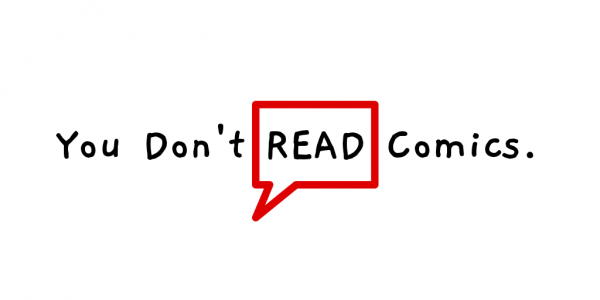Doll Parts: A Lovesick Tale #4 // Review
There’s a darkness in coming-of-age stories that don’t often get addressed. There may be the impression that people prefer to har about what happens when people survive the slings and arrows of youth to become fully-formed people. Writer/artist Luana Vecchio comes to a conclusion of her particularly dark coming of age story in Doll Parts: A Lovesick Tale #4. Madeline’s transformation from childhood innocence to something altogether darker makes its final march across the pages with a dazzlingly dark look into the human psyche and sexuality that runs the risk of being kind of overwhelmingly bleak.
Madeline is 18 now. A friend spots her iat school and asks her what she plans on doing after high school. She tells the old friend that she filled out an application form for a site called “Cannibal Gore.” She was thinking of getting herself eaten by a cannibal...or maybe just getting kidnapped by a sweaty kiddie rapist with a white van. Of course...she might not actually have said that. Or maybe if she did, she didn't actually mean it. Or maybe she didn’t actually run into anyone at all. It’s getting so difficult for her to necessarily tell the difference between her dark daydreams and the rest of her life.
Vecchio plays with the mutability of reality in quite a few interesting ways. Madeline is dealing with knowledge of her past that might not be entirely comfortable for her to think about, so it’s up to speculation as to what it is that she’s actually experienced. Where is the actual trauma? Is it within or is it something that “actually” happened? And then there are the fantasies that might not just be fantasies and she can’t actually determine what is and isn’t real as she makes rather large sms of money taking pictures of herself for guys online and it all feels so very, very surreal. Is her body really her body or just...doll parts that aren’t really of any actual value?
The visual world that Vecchio is bringing to the page is framed differently than it has been in previous issues in the series. Just as the third issue in the series had focussed on off-center framings of things that match the perspective of Madeline pre-adolescence, the visual framing that Vecchio is using in the fourth issue in the series seems to be a little bit darker and more confident with a particularly sinister sort of sense of humor lurking around the edges of everything. IVecchio has done a good jo of making certain that Madeline’s appearance has slowly evolved from the first issue as well. It’s been a remarkably concise look at the nature of youth transitioning into adulthood.
As charming and relatable a character as Madeline is...the whole thing is almost irrepressibly depressing. It’s okay: there’s a place for that on the comic book rack too. It really needs to be expressed...and the industry is very fortunate that it’s being done bny someone like Vecchio who can manage the subtle complexities and maddeningly difficult societal issues that are involved with telling this kind of story. It’s brilliant stuff and probably some of the deepest psychological drama to hit the comics page in quite some time.










